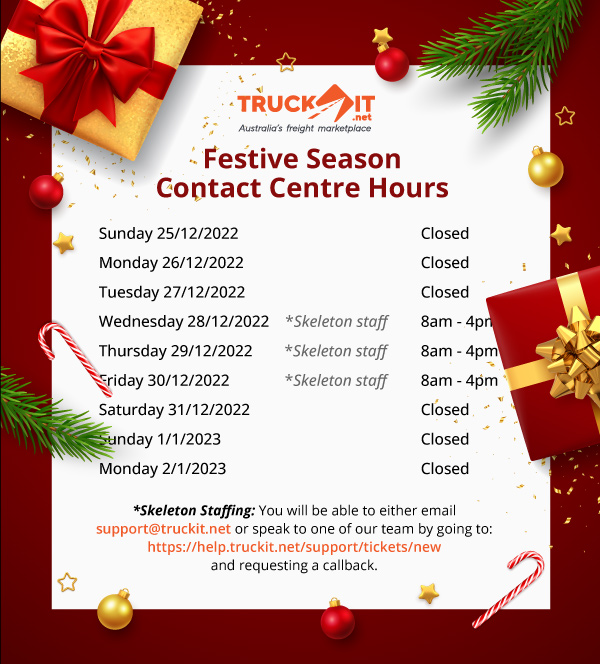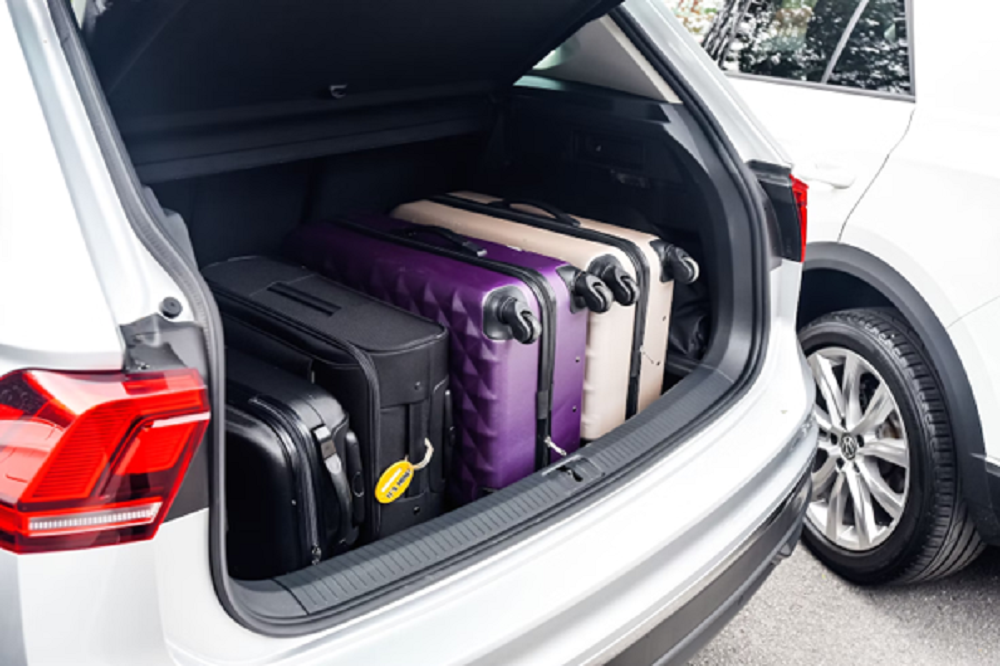When moving long distances, proper organisation and care can ensure a seamless journey for both you and your beloved furniture. As the moving process can be turbulent, proper care is essential to ensure your furniture doesn’t end up damaged or lost throughout the journey.
From packing to planning, we’ve collected everything you need to move your furniture quickly and safely, at a minimal cost.
It's important to start your moving process by making a thorough list of everything you need to move. This includes not just large pieces of furniture, but also smaller household items and any decorations or knick-knacks you want to bring with you. Having a list of inventory will help you keep track of everything and ensure that nothing is left behind. It's also a good idea to take inventory of all your belongings, including any valuable items that you may want to insure.
Before you start packing, it's a good idea to consider the layout of your new home and measure doorways, stairwells, and other spaces to make sure your furniture will fit. This is especially important for larger pieces, as you may need to disassemble them in order to get them through tight spaces. If you're hiring a professional moving company, they will typically be able to handle this for you, but it's always a good idea to be prepared. If you're moving into a smaller space, you may need to sell or donate some of your larger furniture pieces or find a storage solution.
When it comes to packing your furniture, it's important to use appropriate materials for protection during the move. This includes bubble wrap for delicate items and surfaces, furniture pads to prevent scratches and dents and stretch wrap to keep everything in place. When packing large items, make sure to secure drawers and doors with tape to prevent them from opening during transport.
When possible, it’s best to remove any items that are attached to the furniture, such as mirrors or lamps, and pack them separately. If you're using a professional moving company, they will likely provide most of the necessary packing materials, but it's always a good idea to have some extra on hand just in case.

Labelling your boxes and furniture is also essential for a seamless move. This will make unpacking easier as you and your moving company can unload items directly where they belong. Clearly mark each box with the room it belongs in, as well as any special instructions.If you're hiring a moving company, they may provide their own labels, but it's always a good idea to double-check and make sure everything is clearly marked. It's also a good idea to label any boxes containing fragile items or items that need to be handled with care.
In addition to packing and labelling your belongings, you may also want to consider using insurance to protect your furniture and other valuable items during the move. This can give you peace of mind in case of any accidents or damage during transport. Moving insurance typically covers the cost of repairing or replacing damaged items, and it can provide a sense of security and protection during what can be a stressful time.
If you want to make your move as seamless as possible, consider hiring a professional moving company. They have the experience and equipment to safely transport your furniture and household items to your new home and can save you the stress and headaches of doing it yourself. When choosing a moving company, make sure to do your research and choose a reputable company with good reviews and a proven track record.
Collect multiple quotes from different companies and be sure to ask about any hidden fees or surcharges that may not be included in the initial estimate. With the right planning and preparation, moving long distances with your furniture can be a smooth and stress-free experience.
Moving long distances with furniture can be a daunting task, but with the right preparation and planning, it can be done smoothly and stress-free. If you're looking for a reliable and professional moving company to help with your relocation, be sure to check the TruckIt.net network. Collect quotes, browse providers and connect with moving companies all across an easy-to-use interface. For more information, contact us to learn more about how we can assist with your move.
Moving long distances can be a daunting task, but with careful planning and preparation, it can be a smooth and successful process. From packing and planning to before and after checklists, we’ve compiled everything you need to ensure you have a seamless move.
Here's everything you need to know about how to make your long-haul move a smooth experience:
Long-haul moving refers to the transportation of goods over a long distance, typically across the country. It can also refer to international moves, depending on the distance and location. Before you move, it is important to start planning and organizing as early as possible. This will give you plenty of time to gather the necessary documents, research moving companies, and start packing.
Create a budget and stick to it. Moving can be expensive, so it's important to have a clear idea of how much you can afford to spend. Reading about different moving companies and getting quotes from multiple companies to compare prices and services can be effective in choosing the right one. Be sure to read reviews and ask for references before making a decision.
Gathering important documents such as identification, insurance documents, and any necessary visas or permits beforehand can save you a lot of strife when the time comes to move out. Notifying your utility companies, banks and other service providers of your move and cancelling or transferring services as needed will cause less stress when the hauling commences.

The best way to avoid feeling overwhelmed is to start packing early and do it gradually. Consider following these tips to streamline your packing:
Pack your belongings in sturdy boxes and label them clearly with the contents and the room they belong in. This will make it easier to unpack and organize your new home. Consider using packing materials such as bubble wrap and packing peanuts to protect your fragile belongings during transport. It is crucial to disconnect and dismantle any large appliances or furniture.
As well, make sure that all valuables and important documents are packed in a separate, easily accessible bag or box. Always travel with your important documents on hand to ensure they aren’t misplaced.
Unpack and organize your new home as soon as possible. Unpacking will help you feel settled in and make it easier to find your belongings when you need them. As setting up utilities and any necessary services in your new location can take a few days, prioritise this as soon as you move. Update your address and other personal information with any essential parties, such as the post office, your bank and your employer.
Long-haul moving requires careful planning and preparation to ensure a smooth and successful move. By starting early, researching moving companies, packing and labelling your belongings properly, and setting up your new home as soon as possible, you can make the process as stress-free as possible.
TruckIt.net is Australia’s number one market for hauling services. By connecting you to trucking companies, TruckIt.net allows you to connect with providers, collect quotes and research your move, making it affordable and seamless. To learn more about the intricacies of long-haul moving and how TruckIt.net can help, contact us today.
What a year! Thanks to all of our customers and all of our wonderful transport providers for making it a record breaking year!
Through Christmas and the New Year break, we'll be have a skeleton team on hand to help if you need it. You will be able to email us; support@truckit.net or request a callback by clicking here; https://help.truckit.net/support/tickets/new

I know it’s a very busy and challenging time of year, with rising fuel prices, staffing difficulties and road & rail disruptions. So I just wanted to shoot a quick video to say thanks for the good work and give a quick update on the platform.
Although I know most customers are delighted with the service, its still great to hear it again. Here is one that really stood out to me;
On time with pick-up and delivery. They kept in contact with me, informing me where vehicle was after pick-up and when in transit.
Called me when 15 minutes away from drop off point.Excellent service.
And here is another:
Need an engine shipped from Bundaberg to Melbourne. Tried quite a few of the big name companies and obviously were not interested.
Found a great company on Truck it who completed the job inside 5 days door to door with no issues at all.
The first shows how much customers appreciate communication. It sounds like that provider made things by using the app to enable tracking. In my opinion the highlight in the second review is all about the customer recognising that our providers are often more flexible with greater service standards. Great work!
While we haven't specifically been looking for more business to business jobs, a lot more manufacturers, wholesalers and civil projects have been reaching out to us to find good quality providers. It means an greater need for pantechs, skels, flat tops, curtainsiders, low loaders and more. These businesses generally have terms and conditions that go above what most consumers would expect, but the pay off is the chance of longer-term work, easier loading & unloading and pickup and deliveries to the same locations while dealing with the same people.
To give yourself the best chance of landing a slice of this work, make use of the insurance uploader for your certificates of currency, and keep your Truckit rating high.
Lastly I just want to say thanks to all of the transport providers who have kept Australia moving through the year!
Stay safe on the road and have great Christmas,
Rob
If you’re wondering how much it costs to transport a caravan interstate, Truckit can help! We’re an online freight marketplace that connects you to transport providers across Australia who can move your caravan wherever you need to go. Compare quotes and service providers all in one location with our easy-to-use platform and enjoy affordable caravan transport services that are fully inclusive of Truckit fees and GST.
Transporting a caravan by yourself is inconvenient at the best of times and can be a stressful undertaking if travelling to or from a distant or remote location. Using a hauling service for caravan transport interstate can save you the expense of fuel, and the time required to travel long distances. At Truckit, we understand that life can get busy and not everyone can commit the time required for long-distance hauling. That’s what makes us passionate about connecting you with a compatible freight company, so you can rest-assured your belongings are in good hands.
So, you’re intrigued by Truckit, but are a bit confused about the process? No need to stress - we’ve simplified the process of getting a quote, so you can focus on what’s important.
Navigate to our website and click the category your item will fall under. In this circumstance, you’ll want to click the “Rvs, Caravans and Trailers” section and select “Caravans”.
Complete the form that pops up, inputting all relevant information and then press continue. Pay extra attention when inputting the make and model, what sort of hitch is on the caravan, the weight and dimensions. You’ll also want to indicate if it's registered and whether it needs to be trucked or towed.
Tip: Ensure you are getting these details from your seller if buying second hand.
Follow the link on the activation email you will receive which ensures your listing is live on our website. Providers will be able to see your job and if it suits their schedule, they will post a quote!
Now that you’ve listed your caravan and acquired quotes, you’re probably wondering what happens next. Well, now you can view providers' profiles to assess their reviews, previous jobs and company descriptions. You can message providers directly to ask questions you may have about their quote and clarify any details about your caravan. We’ve enlisted these features to help you decide which provider is best for you. Once you’ve determined which provider you’d like to work with, it’s as easy as booking through the “proceed to accept” button.
Remember:
Be sure to list your caravan ahead of time to ensure providers have plenty of notice to arrange schedules and quotes. Try to provide as much detail as possible when creating listings on our website to avoid any confusion during the quoting process.
With Truckit, you can trust that your caravan will be in safe hands as we have over 5000+ transport providers accredited with us. These providers comprise of owners and drivers with years of experience and a personal stake in every job they do, as well as larger companies who are well-respected within the industry. Our providers have travelled over 50,000,000 kilometres with Truckit, and are educated in how to safely transport caravans over long distances no matter whether it's being trucked or towed.
If you’re still hesitant about trusting Truckit, check out the following facts:
At Truckit, we work with caravan transporters to offer our door-to-door service. If you're seeking convenience, door-to-door service is the choice to make, as our transport providers will go the extra mile (literally) to make the process of organising transport easy. Direct-to-door is not restricted to the transitional operating hours that depot services are, and therefore providers offer flexible meet times, including on weekends, early mornings or even at night. While this service is often more expensive than depot-to-depot shipping, it guarantees there will be no depot storage fees if you are unable to visit the depot during regular business hours.
If you’re looking for a stress-free way to transport your caravan interstate, look no further than Truckit. Join our community of over 300,000 customers and get a quote today!
So, you’ve just bought a car and you realise it's in another state, or you’ve broken down on your road trip and had to fly home, leaving your car stranded. Whatever the reason might be, you're wanting to transport your vehicle interstate. You’re probably wondering how much it costs to transport a car interstate, and luckily for you, we’ve got the answer.
The answer is not as simple as you might think. There are a lot of factors that contribute to the price of freighting your car, including the vehicle type, the pickup and delivery destinations, what service level you require and the fluctuating cost of fuel. When faced with the variety of transit options available, having an understanding of these factors can assist you in understanding how much you’ll be out of pocket.
Using our experts, we’ve put together the following guide to assist your comprehension of what variables influence the cost of interstate auto shipping.
One of the biggest impacts on the cost of interstate car freight is the distance it needs to travel. More often than not, the further your vehicle is being transported, the more expensive the job will be. Car carriers consider cost per kilometre to be one of their largest considerations when calculating quotes. On average, it costs between 40-60 cents per kilometre to move your car interstate. However, this price is influenced by many other factors which will be discussed in further sections of this guide.
A major factor that can determine the cost of transport is the type of vehicle you are moving. Larger vehicles such as vans, SUVs or Utes occupy a greater amount of the car carrier's limited space and therefore will be more expensive to ship than more compact automobiles. Modifications made to the car, such as alterations to the tyres or suspension will also affect the price as some companies consider weight when calculating rates.
Some of the most popular cars to transport interstate and locally are:
Transporting premium vehicles can also affect the price of shipping as often this requires services such as enclosed car carriers. These carriers are smaller trailers that are sealed off from the outside environment and are also available for short-term rental for extra security. Due to the additional protection against the elements and potential pitfalls on the road like rocks and debris, this service is recommended for those looking for increased peace of mind.
Another variable that will impact the cost of transportation is whether you are needing items to be transported within the vehicle as well. Many of the major car carriers require that you remove all belongings from the interior of the vehicle, however, some providers do offer a ‘Goods in Car’ service for an additional fee. Although this cost might not be exorbitant, it should be considered when determining your budget. It should also be noted that there are many conditions within the ‘Goods in Car’ service which will vary depending on the provider: Below are some common stipulations:

It is important to note that several of the larger car carriers don’t pick up from salvage yards or repairable write-offs, so it is important to ensure you are reading terms and conditions carefully when choosing your provider. If your vehicle is non-running, this will also affect the price and the provider you use as this will often require a specialised service. It’s important to ensure if you’re buying a used car to gather information regarding its drivability and if it is coming from salvage.
Car carriers have multiple service delivery levels available to customers that affect car transportation costs. The two most popular service levels are door-to-door and depot-to-depot. It is important you evaluate your own requirements and select a service level that suits these needs.
Door-to-door is a delivery service level that involves transport providers picking up from and dropping off at an exact address, whether it be a residential or a commercial property. This service is often more expensive as it requires the provider to deviate from their usual route. This fee can be costly when delivering to remote areas.
If pickup and delivery locations are near highways or in major cities, you may find the cost of a door-to-door delivery isn’t that much more than a depot-to-depot. Door-to-door delivery can also offer greater flexibility, as some drivers are willing to collect or deliver cars outside of regular business hours, including on weekends, in the early morning, late afternoon or even at night.
Residential zoning regulations, narrow roadways, weight restrictions or blockages preventing ease of access can limit your delivery options so it’s best to check your route before booking.
Depot-to-depot delivery is a service level that customers use when they prioritise price over convenience. This delivery service requires customers to drop off and pick up their vehicle from a depot themselves. Since transport providers don’t have to detour from their regular route, the cost is typically less than door-to-door.
Convenience can be found within this service level as depot-to-depot delivery is often quicker as major car carriers aren’t required to outsource tow truck companies to collect and deliver to residential addresses.
Some disadvantages of a depot-to-depot service include:
Trucking companies have several expenses that can affect the cost of car transport interstate. One of their biggest expenses is the cost of fuel. As diesel has risen by over 60 cents per litre since 2021, many transport organisations have had to raise their prices to cover this expense. This has been one of the most influencing factors affecting the price of shipping a car and should be kept in mind when gathering quotes.
At Truckit, we aim to make the transport process as easy as possible for our users. When you create a listing, we connect you with thousands of transport providers across Australia to get your car safely delivered. Find out which provider is best for you by exploring customer reviews and job history on our website. If you’re ready to get a quote and find all your car transport interstate costs, visit our insterstate car transportation page.
1. Where were you born?
Assam (North East) - India
2. Favourite Hobby?
Playing with Bat and Ball
3. Favourite Quote?
"Everything comes to us that belongs to us if we create the capacity to receive it." - Rabindranath Tagore
4. Favourite Band?
Fossils Band (Kolkata)
5. Favourite Food?
Hilsa fish in Mustard gravy
6. Post-pandemic - Where Do You Want To Travel First?
Queenstown, New Zealand
7. What's a fun fact people may not know?
I made students believe that I was a new teacher at a private arts school being a student on the very first day of the course.
8. What’s your favorite part about your job at Truckit?
Bringing up design culture among folks
Understanding some of the most common freight shipping acronyms related to logistics and transportation will assist you in tackling quotes and shipping contracts with confidence. We have collated some of the most common freight terms that you will see here on Truckit.net when discussing your freight listing with one of our Transport Providers & Customer Support Staff.
Owner Operator
Freight Broker/Agent
A Freight broker is an agent between shippers and carriers. Instead of taking possession of the freight, the broker facilitates communication between the shipper and the carrier. They’re the ones making sure the handoff goes smoothly between carriers and shippers, and that freight arrives safely & on time.
Some shippers like working with freight brokers because they have a single point of contact from point A to point B while their freight moves to its destination. Working with a broker can eliminate the need to negotiate with a carrier, planning routes, and tracking freight. Some carriers also like working with freight brokers to optimise their routes and minimise dead kilometers, boosting their earnings in less time.
Cubic Weight
Also known as Volumetric Weight, and is a pricing technique for commercial freight transport which assigns a weight based on the volume of an item. For example, many pallet carriers use the cubic weight conversion of 1m3 = 333kg. Even though an item may only weigh 4kg, due to its size, it may be 15kg of cubic weight. For example, a large blanket might be relatively light, but large in size.
Door to Door / Depot to Depot
Single Transit Insurance
Consignee/Consignor
Consignment Note
Flatbed
A flatbed trailer is a typical open deck trailer that has no roof nor sides. It is mainly used for transporting heavy, oversized, wide and indelicate goods such as machinery, building supplies or equipment. The flatly shaped body makes it much easier to load and unload goods using ramps or lifting equipment.
Surcharges
A surcharge is an extra fee charged by a company to cover costs of one form or another. One example is a payment surcharge which may be charged by some merchants when a customer elects to pay by cheque, credit card, charge card or debit card. This covers the merchant’s costs (usually bank costs) of accepting this payment.
Other types of charges:
Dangerous Goods
CAR SPECIFIC:
Auction House
Salvage Yard
Drivable
Goods in Car
Driven Service